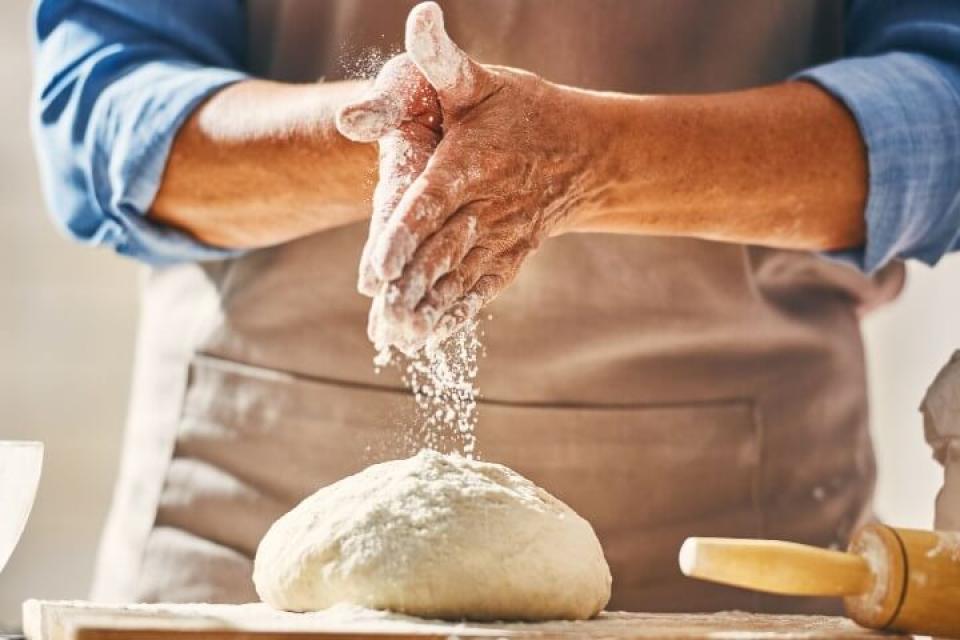And can I use the decade-old yeast packet I found in the back of my pantry? As the coronavirus pandemic continues to crest, those individuals who have been asked to by their governments, or are able to out of choice - depending on where you are living right now - are staying home to help slow the spread of COVID-19.
And lots of them seem to be baking bread, to the extent that flour and yeast have flown off grocery shelves almost as quickly as toilet paper has.
Perhaps you’ve somehow gotten your hands on some precious baker’s yeast. Or maybe you’re plum out of luck and wondering how to make your homestead dreams come true without any store-bought options. The good news is that, with flour and some creativity, a loaf of … something is always attainable (in other words: yes, you can get that bread). Here’s how to approach the question of yeast when it comes to baking:
What is yeast?
Yeasts are (mostly) single-celled microorganisms that belong to the fungus kingdom. There are more than 1,500 identified strains of yeast, and they are, as Jennifer Frazer writes for Scientific American, “naturally found floating in air and on just about every surface on Earth.” The species Saccharomyces cerevisiae is the one most commonly used in breadmaking. Bakers and brewers have been using yeast to make bread and alcohol for thousands of years.
How does yeast work in baking?
S. cerevisiae feeds on sugars for energy, in the process producing carbon dioxide and alcohol (this is fermentation in a nutshell). The carbon dioxide bubbles get trapped in the dough, creating the lift that makes the dough rise. The alcohol, meanwhile, evaporates when baking, transforming into gas that also contributes to the rise of the bread. The alcohol, along with acids produced during the fermentation process, impart that wonderful flavor and aroma associated with yeast-leavened breads.
What are the different kinds of commercial yeast used for baking?
Active dry yeast consists of live yeast cells that have been largely dehydrated under heat, leaving some cells alive and surrounded by the remainder of dead cells. According to Cook’s Illustrated, “because the spent outer cells encapsulate living centers, active dry yeast must first be dissolved in a relatively hot liquid” — known as “proofing” or “blooming” — in order to “slough off dead cells and reach the living centers.”
Some yeast manufacturers say that modern active dry yeast does not need to be proofed, and can be added directly to dry ingredients, but it’s probably still a good idea to check that the yeast is alive through proofing — especially if it’s been plundered from the forgotten depths of a pantry — before you go through all the trouble of baking something.
Active dry yeast, along with instant, can typically be found in the grocery store baking aisle, next to other dry ingredients like flour and baking powder.
Instant yeast, sometimes called bread machine yeast, is another type of dry yeast. It is finer than active dry yeast and can be mixed right in with dry ingredients without having to undergo activation first, although Delish’s June Xie notes that she still prefers to bloom instant yeast “to ensure even distribution in the dough.”
Instant yeast is more potent than active dry yeast, consisting of higher percentages of live cells, so when making substitutions, use about 25 percent less instant yeast compared to active dry yeast, e.g., ¾ teaspoon of instant instead of 1 teaspoon of active dry. (The same is true in reverse: If a recipe calls for instant but you only have active dry, increase the amount by 25 percent.)
Fresh yeast, sometimes called compressed or cake yeast, is also composed of 100 percent living cells, but has not been dehydrated. The result is a solid, soft, crumbly, perishable block that needs to be dissolved when using, and refrigerated when not (accordingly, fresh yeast is found in the refrigerated section of grocery stores, although not all stores carry it).
Professional bakers often prefer this type because of what some describe as a stronger, “distinct” flavor (although some bakers dispute claims that using fresh yeast makes bread taste better). Speaking to Epicurious, Susan Reid of King Arthur Flour calls fresh yeast a “special occasion yeast” best suited for baking-heavy times like holidays — or, dare I say, sheltering in place? — when you can use up all the fresh yeast within its shelf life of two to three weeks. When making substitutions, use a ratio of about 2:1 fresh to active dry, as measured by weight.
Can I use this old dry yeast I found in the back of my cupboard?
It’s usually a good idea to follow the “best by” date on the packaging, but desperate times call for desperate measures. Look for signs of life by doing a yeast freshness test, a.k.a. proofing or blooming. This involves dissolving room-temperature dry yeast in warm water and sometimes a little bit of sugar; the water should not exceed a temperature of about 110°F, as going too hot can kill the yeast cells. After 10 minutes or so, the yeast mixture should have increased in size and become foamy.
Even if the expired yeast proves active, be aware that yeast “loses its potency as it ages, resulting in longer rising times,” per yeast manufacturer Fleischmann’s. Prepare to experiment with those times, as well as with increased yeast amounts to make up for higher numbers of dead cells. Don’t be too surprised if the flavor and/or the rise turn out different.
And just a note for future reference: When storing unused dry yeast, it’s best to keep it in airtight containers in the freezer. This puts the yeast cells “in a state of suspension” and extends the shelf life for months past its expiration date, Emma Christensen writes for The Kitchn.
I can’t find any yeast in the store! Can I make my own?
The answer is yes, if you’re in possession of some time, patience, and flour (the last of which may be the hardest to find in this current climate). Entire subcultures have been built around the allure of cultivating one’s own natural, or wild, yeast starter for bread. A sourdough starter, at its most basic, is “a lively mixture of flour and water combined with wild yeast and good bacteria captured from the air,” as Dayna Evans writes for Eater. Although the process takes nearly a week and can involve some waste (unless you turn your discarded starter into bonus snacks), the steps themselves are fairly simple.
I’m not doing this starter crap!!! Are there any other alternatives?
Baking soda paired with an acidic ingredient, e.g., buttermilk, vinegar, or lemon juice, can also act as a leavening agent, but, as Xie writes for Delish, this alternative doesn’t have “the strong lifting power of baker’s yeast” and “can leave a bitter, soapy aftertaste when used in large amounts.” Instead of trying to use baking soda or powder as a straight-up substitute for yeast, look for recipes that specifically call for those ingredients, like soda breads and quick breads. Or leave the realm of leavened breads entirely and turn your attention to flatbreads, including chapatis, bings, and tortillas. The world is vast and full of doughs — take advantage of it.
This article was published at eater.com by Jenny G. Zhang @jennygzhang






